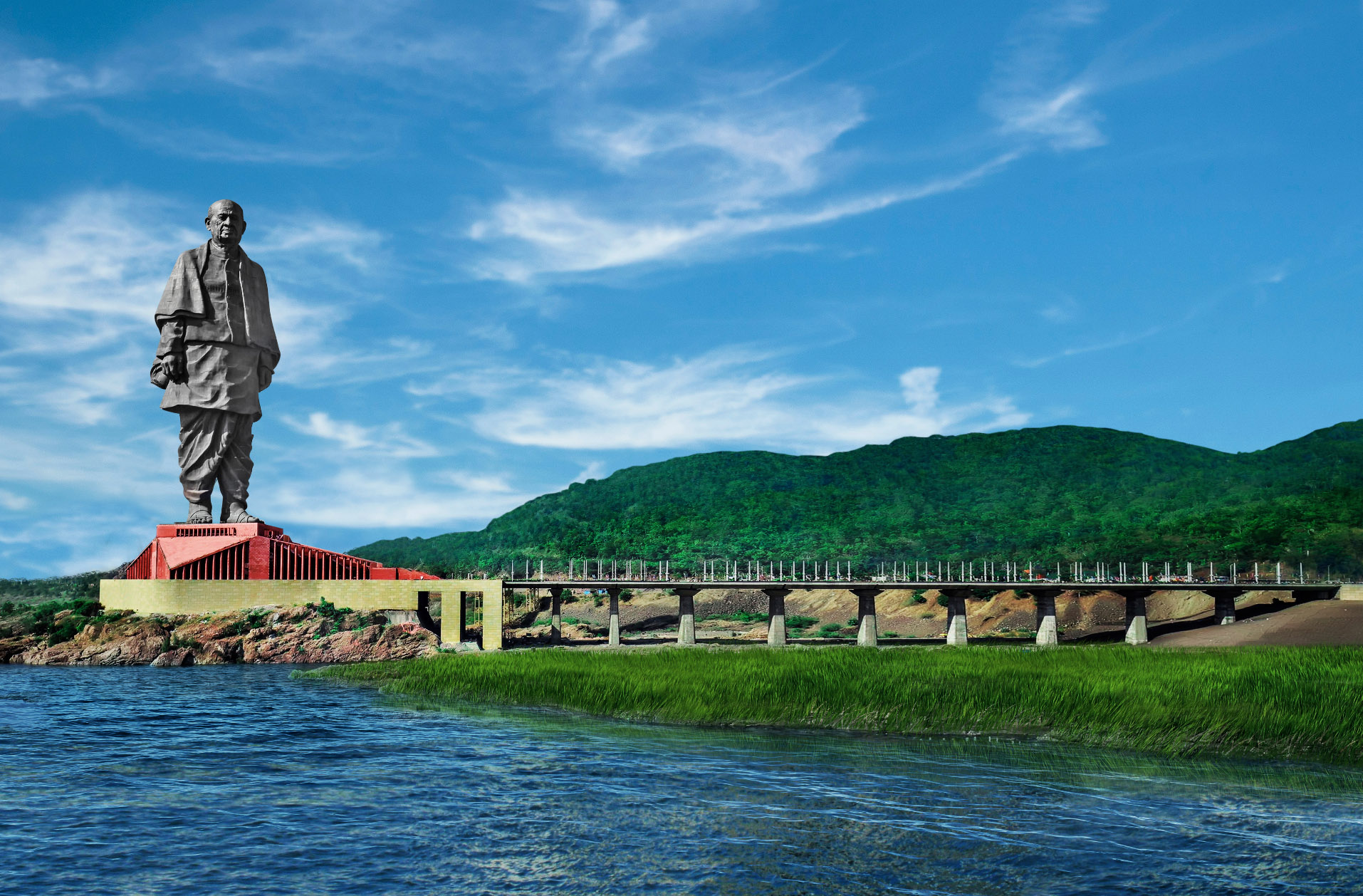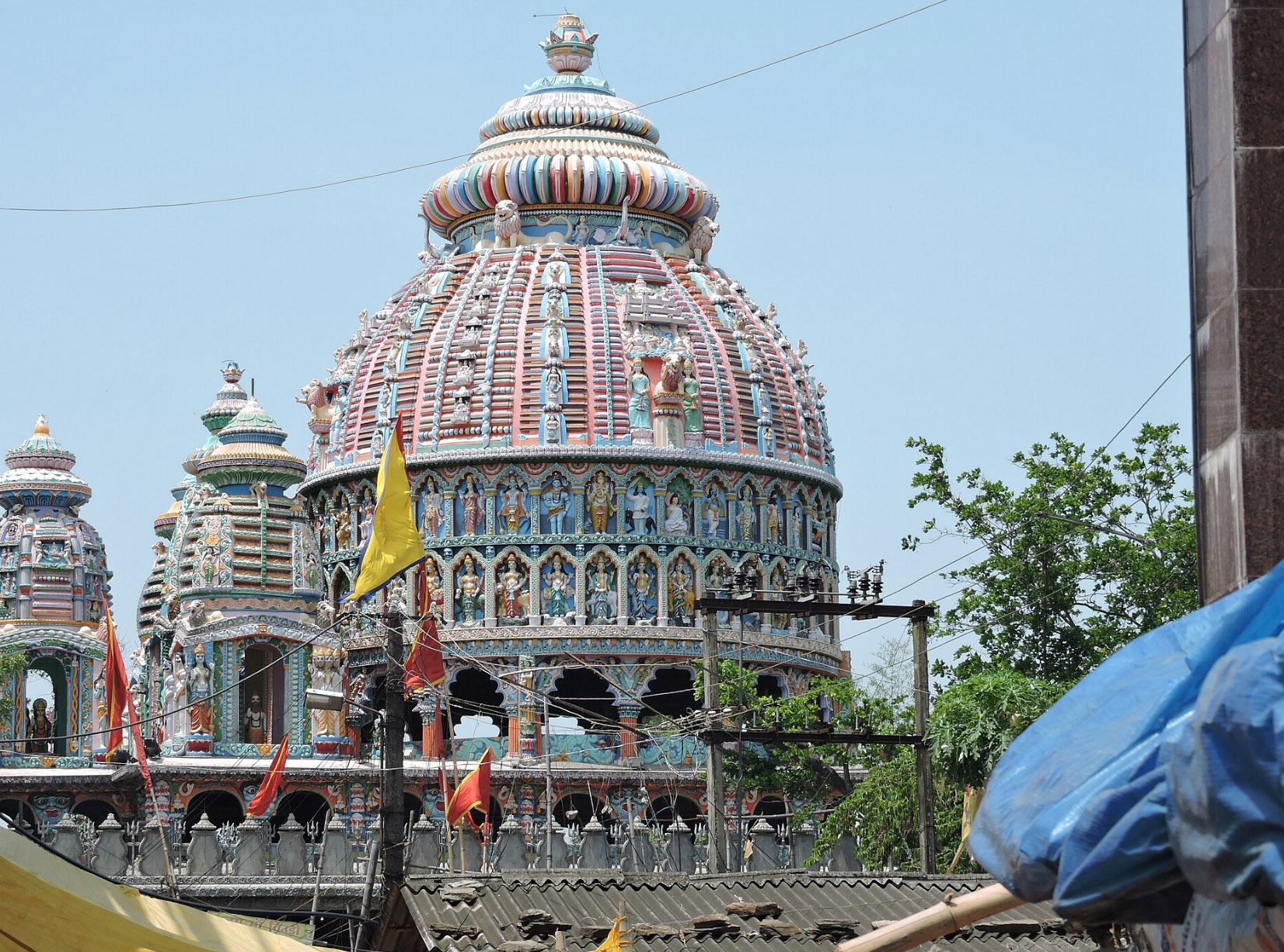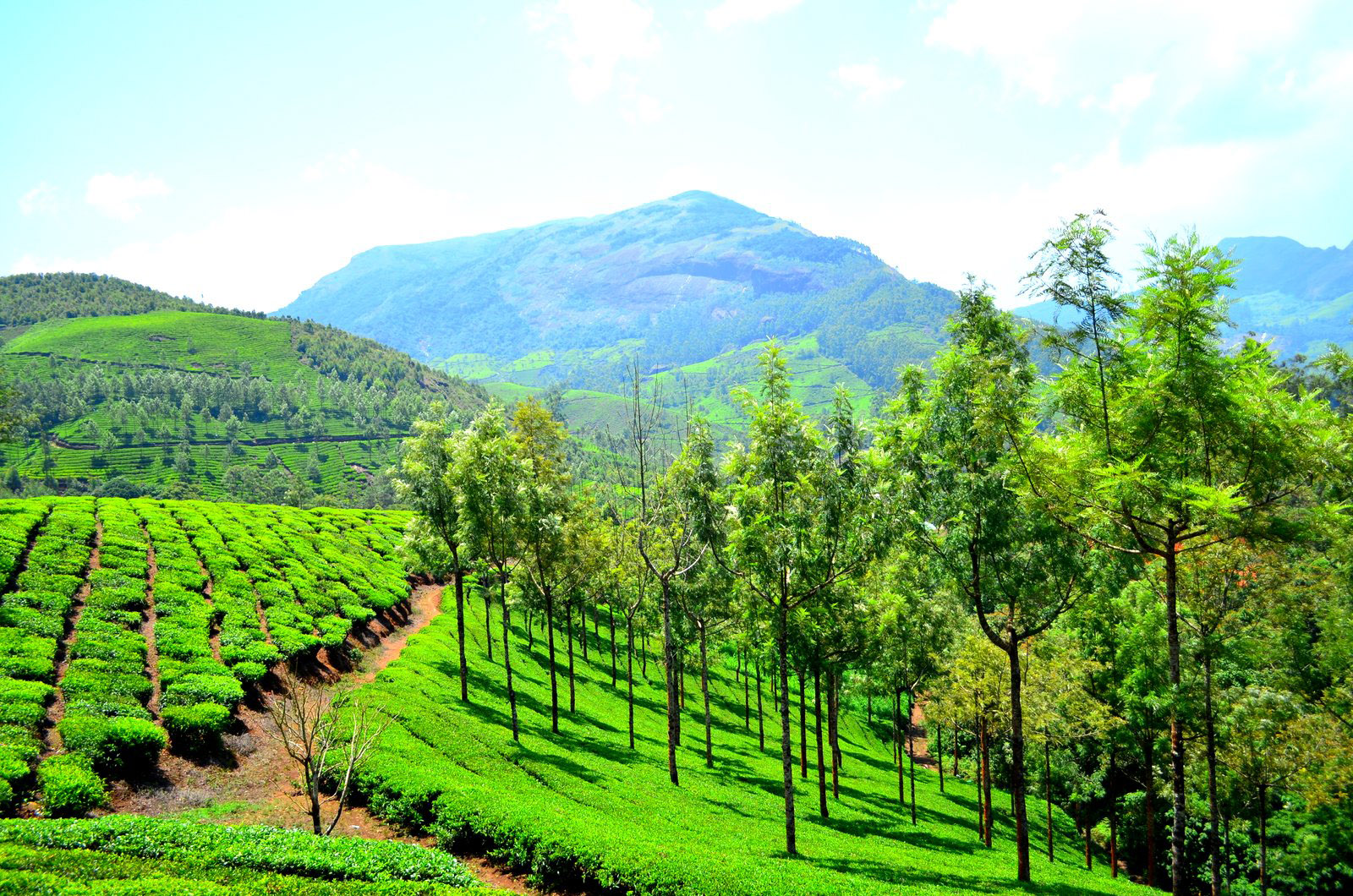Incredible India: Where excitement awaits every turn
One of the oldest civilisations in the world, India, with its rich heritage and myriad attractions present a mosaic of multicultural experiences where one can find something exciting, enticing, and interesting at every turn one makes. No wonder then that India is among the most popular tourist destinations in the world.

The seventh largest country in the world, the Indian Peninsula is largely insulated from the rest of mainland Asia by lofty mountain ranges to the north and by seas and oceans to its east, west and south. India’s location and its vast expanse gives the country a unique geographical terrain that abounds in enthralling natural landscapes and a profusion of endemic flora and fauna.
Stretching from snow-covered Himalayan mountains in the north to tropical rainforests in the south, and from picturesque deserts in the west to rock-hewn spiritual abodes and lush mangroves in the east, India offers remarkable destinations that please even the most travel-jaded visitor.
As a visitor to this land of wonders, you are greeted by diverse nuances of cuisines, faiths, arts, crafts, music, nature, lands, tribes, history and adventure wherever you go. In India you can experience snow and rejuvenating cool air among the mountains in the north; ride a camel along the golden sands of the Thar Desert in the west; visit religious centers from antiquity in the east, or soak in the sun and enjoy the balmy weather at beach resort in the south.
If you are particularly daring and need a pounding of adrenalin, you could scale dizzying heights or plummet to the depths at any of the adventure sites; go along awe-inspiring, winding mountain trails, take a ride over roaring rivers or visit steep waterfalls, take an elephant ride or view majestic wildlife at close-quarters in the dense jungles of India.
India also offers a host of sites to retreat, recharge, and rejuvenate at the numerous yoga ashrams or modern spas and wellness centres, India’s sun-kissed coastlines, peace-permeated hill stations and breezy riversides offer a host of nutritious food, spas, yoga, and detox therapies. Ayurveda, naturopathy, Vedanta and meditation techniques, retrieved and curated from the most ancient of sciences and arts, offer innumerable ways to keep both the mind and the body aligned, peaceful and in perfect health
India is a mesmeric conflation of the old and the new. As the bustling old bazaars rub shoulders with swanky shopping malls, and majestic monuments accompany luxurious heritage hotels, the quintessential traveller can get the best of both worlds. A visit to India promises to be a once in a lifetime trip; below are just four aperitif sites in the north, west, east and south of this amazingly gorgeous land.
Taj Mahal

No trip to India would be complete without a visit to the Taj Mahal, the iconic mausoleum. built in memory of his wife MumtazMahal by the Mughal Emperor Shah Jehan. Described by erstwhile Indian national poet and the 1913 Nobel Laureate in Literature, Rabindranath Tagore, as a “teardrop on the cheek of eternity”, this breathtakingly ethereal marble monument is considered by many to be the most beautiful building constructed by man.
It is ranked among the seven wonders of the world and is a monument of pride for not just for the city of Agra, where it is located, but for the whole of India. A UNESCO World Heritage Site, it is featured in almost all literature about India and is one of the most enduring images of the country.
Although it is best known as a symbol of love, a grieving emperor’s ode to his deceased queen, another legend sees the Taj Mahal as an embodiment of Shah Jahan’s vision of kingship. The story goes that he sought to build something akin to heaven on earth, a spectacular, unbelievably beautiful monument that reinforced the power as well as the perceived divinity of the monarch as next only to the Almighty.
It is also widely believed that emperor Shah Jahan invited artisans from Italy and Persia to work on this marble monument, a fascinating aspect of which is that the structure looks identical from all four sides, except the one that faces River Yamuna. This side is said to have been especially embellished to serve as the main entrance for the emperor. Shah Jahan would approach the Taj Mahal from the river, aboard a barge, while the entrance used by tourists today served, at the time, as an entryway for soldiers and common people.
There are intricate inscriptions on all four entrances, while marble carvings and pietra dura mosaics adorn the walls. Lapis-lazuli, cornelian, mother of pearl, agate and emerald are some of the precious gems and stones that were once used in its design. It is said that work on its construction began in 1631. Legend has it that it took 20 years to complete this architectural marvel!
The edifice is also riddled with optical illusions and masterful architectural safeguards. As one first beholds the monument from the main gate, for instance, the Taj Mahal looks large and imposing, but as you move closer, it appears to shrink in size. Also, the minarets surrounding the edifice, while perfectly upright to the naked eye, have actually been constructed to lean away from it so that, should a disaster like an earthquake come about, they would fall away from and not on the mausoleum.
Statue of Unity

It is massive, almost gigantic! That is the first reaction most people have as they speed down the winding road leading to the towering Statue of Unity (SoU). A long bridge connects the mainland to the Sadhu Bet Island, on which the statue stands. Silhouetted against the surrounding Vindhya and Satpura mountain ranges, the colossal statue almost seems to pierce the skyline.
The legacy of Sardar Vallabhbhai Patel, India’s first Home Minister, or the ’Iron Man, as he is known for his decisive actions, lives on in the form of this massive statue dominating the Narmada river basin. He towers over the landscape, as if, keeping an eye over the land he helped become independent. Standing at a height of 182 meters, the Statue of Unity is the tallest statue in the world towering over the second tallest statue in China by more than 55 meters. By comparison, the famed Statue of Liberty in the United States, once considered the tallest in the world. would be almost puny at just 46 meters in height
Almost 100 times the height of a six foot person, the statue depicts Sardar Patel in a walking pose, clad in his characteristic simple attire. Visible from as far away as 8 km, the SoU was inaugurated on 31 October, 2018, by Indian Prime Minister Narendra Modi to commemorate the 143rd birth anniversary of Sardar Patel.
The statue has been built on a star-shaped geometric base that covers the entire Sadhu Hill. It has a viewing gallery at 135 m, at the statue’s chest level, that can be reached via two high-speed elevators. The gateway to the elevators is through an exhibition gallery, in which you can marvel at a model of the statue and an elaborate blueprint, among other exhibits. The elevators travel 150 m in half a minute and can carry 26 people at one time. From the viewing gallery, reinforced with steel grids, you can take in the breathtaking views of the surroundings and of the SardarSarovar reservoir at a distance.
Interestingly, it is not just the statue that throws light on Patel’s life and achievements, but also a spectacular laser show, which talks in detail about the statesman’s life. It traces the life of Patel and talks about why the statue has been erected in his honour. The show also outlines the leader’s contribution to the nation. However, what really fascinates are the realistic projections that show Patel in different phases of his life.
Constructed by engineering giant Larsen and Toubro, SoU was built in a record time of 33 months. The SoU comprises two semi-joined, composite concrete cylindrical cores surrounded by a steel space frame to support the external cladding.
Deori Temple

Deori Temple, a jewel waiting to be discovered, lies about 60 km from the vibrant city of Ranchi, the capital of eastern Indian state of Jharkhand. Dedicated to an avatar of Hindu Goddess Kali, this temple is a timeless testament to history and spirituality that beckons travelers from all over the land. Dating back more than 1,000 years to the start of the second millennium this sacred sanctuary resonates with legends as captivating as its architectural grandeur.
Stepping into the Deori Temple transports you back in time to an era where divine intervention was intertwined with earthly marvels. Among the myriad legends surrounding its origins, is one about the local King of Tamar, who, guided by a dream of the goddess, unearthed the sacred temple of the goddess hidden within the verdant folds of the forest.
Legend has it that anyone attempting to alter the temple’s structure would incur the wrath of the Goddess and hence the condition of the inner sanctum of the temple remains unblemished, its original form a timeless tribute to the reverence and awe it commands. All renovations and new constructions have been done around the original structure, which has hence become an untouched shrine within a larger temple.
Centuries ago, skilled artisans meticulously built the sacred temple using a technique that relied solely on interlocking stones without the use of any binding materials like cement. As you approach the temple, you will see the imposing sandstone walls rise majestically, adorned with intricate bas-reliefs that weave tales of mythology and spirituality.
Each detail on the temple walls and its surroundings, meticulously carved by master craftsmen, portrays a pantheon of deities. Such is the clarity that with every glance, you are transported into a world where the boundaries between the mortal and the divine blur, and the stories of gods and goddesses unfold in vivid hues before your eyes.
Munnar

A lush carpet of rolling green, interrupted by low rises of mountains of the gorgeous Western Ghats, Munnar, in Kerala, is dotted with huge emerald plantations and pristine waterfalls. No matter where you go in Munnar, a mixed scent of tea, coffee and cardamom will follow you everywhere. A bountiful natural treasure, Munnar leaves one rapt with its spectacular and awe-inspiring views. Such is the beauty of the myriad shades of green of the landscape that Munnar is often called the Kashmir of South India.
Nestled at the confluence of three gushing rivers- Muthirapuzha, Nallathanni and Kundala-Munnar literally means three rivers. During the blooming season, every 12 years, the town of Munnar is transformed into an artist’s canvas, when the beautiful and vibrant Neelakurinji flower carpets the land in hues of purple and blue. It is truly a sight to behold as the town acquires a paradisiacal setting.
Replete with picturesque greenery, valleys and mountains along with a plethora of flora and fauna in its teeming national parks and wildlife sanctuaries, Munnar is an exhilarating and peaceful travel destination. It offers a respite from the chaos of daily life and all its stress with cloudy skies, constantly pleasant weather, delectable cuisine and hillocks and greenery.
Munnar is also home to the highest peak of South India, Anamudi, at a height of 2,695 m. This peak has a number of trails that make it a must-visit for trekkers and backpackers. Given its tourist appeal, the state government has guaranteed that access to this hill town is easy— it is well-connected to Bengaluru, Kochi, Mysore and other larger cities, ensuring an influx of travellers all year round, including the rainy season, when the Munnar is its most vibrant and fragrant self.The region around Munnar was once the summer retreat of the erstwhile British Government and several maharajas of the Travancore Kingdom. It was once known as the High Range of Travancore.












